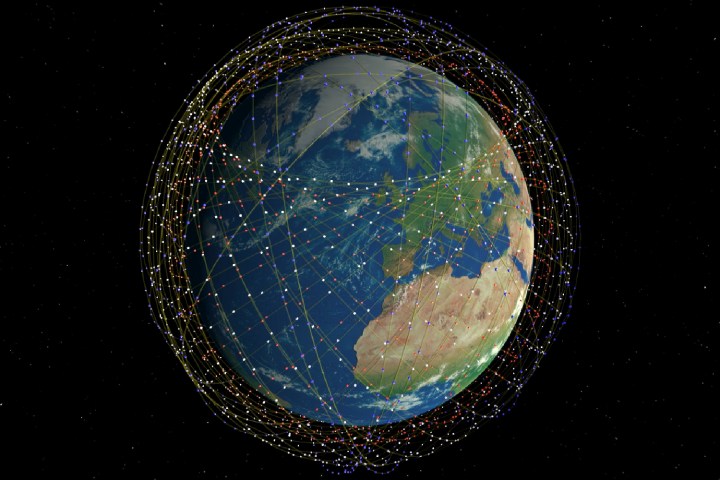
From Tesla to Hyperloop to plans to colonize Mars, it’s fair to say that Elon Musk thinks big. Among his many visionary ideas is the dream of building a space internet. Called Starlink, Musk’s ambition is to create a network for conveying a significant portion of internet traffic via thousands of satellites Musk hopes to have in orbit by the mid-2020s. But just how feasible is such a plan? And how do you avoid them crashing into one another?
To shed some light on the possibilities, Mark Handley, professor of Networked Systems in the Department of Computer Science at University College London, recently created a detailed simulation of Starlink. Handley’s experiment was carried out using a custom-built simulator written specifically for this purpose, with visualization made possible thanks to a 3D game engine.
“I’ve written network simulators before, but I don’t normally write them in a game engine,” Handley told Digital Trends. “However, in this case, being able to visualize the motion of the constellation was crucial to understanding what was going on. It’s just so much more intuitive what’s happening when you can watch it. At the low level of detail of these simulations, the problem is essentially a 3D geometry problem, and a game engine is actually really well suited to exploring such problems.”
Handley said that he was intrigued when he heard about Musk’s hopes for Starlink, although he had a number of questions he wanted answered. For example, he wondered if it was really possible to connect together thousands of low-Earth orbit satellites into a mesh so that the paths taken by the traffic are direct enough, despite first having to go 1,100km upwards. He also had questions about network capacity, particularly as compared to more conventional technology such as optical fiber.
So what’s Handley’s conclusion? “Yes, I think the concept is overall feasible,” he said. “It’s difficult though, and SpaceX [is] pushing the limits of technology in several areas simultaneously. Their use of phased array wireless links to steer narrow beams to and from the satellites will be pushing the limits of what has been done. This is mostly known technology, but doing it to the degree they’re doing it will be challenging. The use of free-space laser links between satellites is relatively unknown technology. [The European Space Agency] previously demonstrated that it was possible, but SpaceX will need to track more targets simultaneously and achieve higher data rates. I have confidence it can be done, but it may take some time to really get right.”
One thing’s for sure: From both a hardware and software perspective, “no internet provider has ever needed to manage a network like this before.”
Editors' Recommendations
- SpaceX boss Elon Musk predicts date of next Starship test flight
- Elon Musk declares SpaceX’s mighty Starship rocket ready for launch
- Elon Musk throws some light on his very busy schedule
- Elon Musk confirms flight readiness of world’s most powerful rocket
- Elon Musk says SpaceX eying March for first orbital test of Starship rocket


